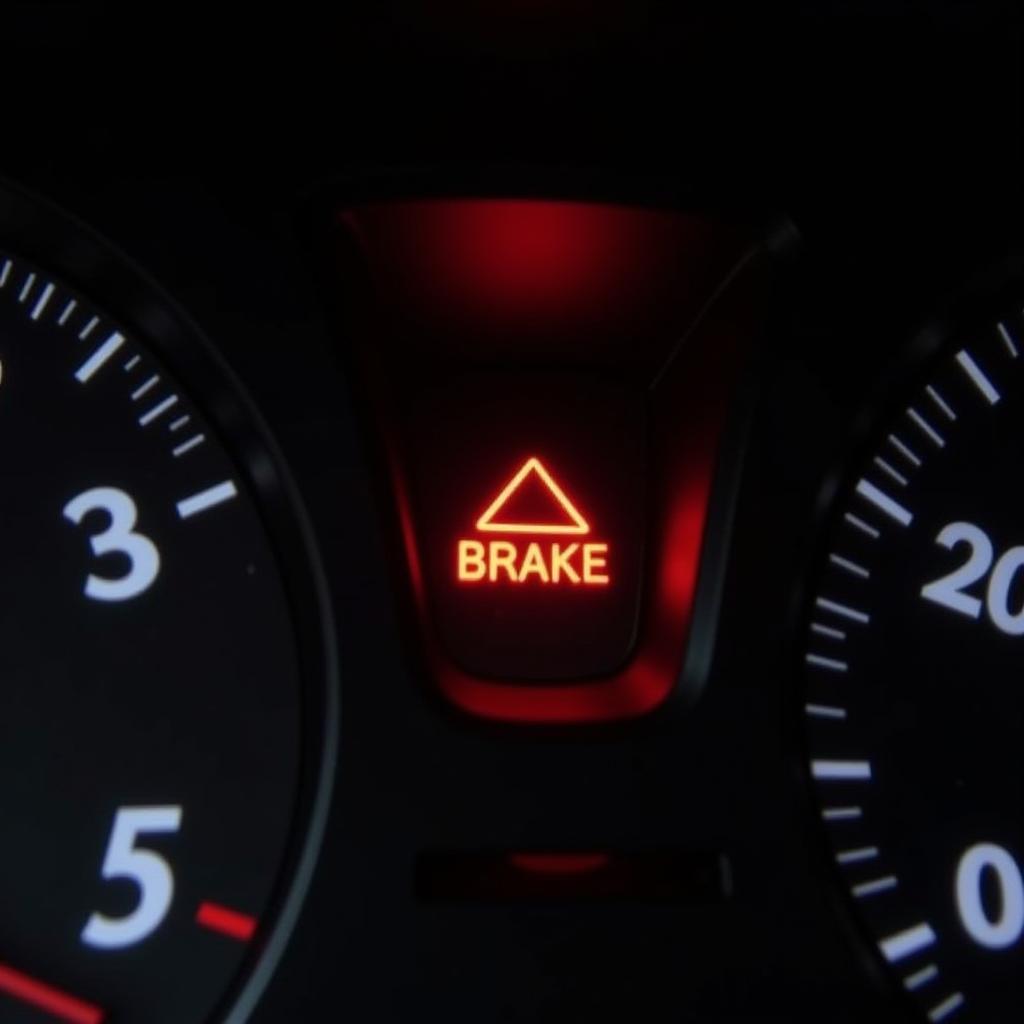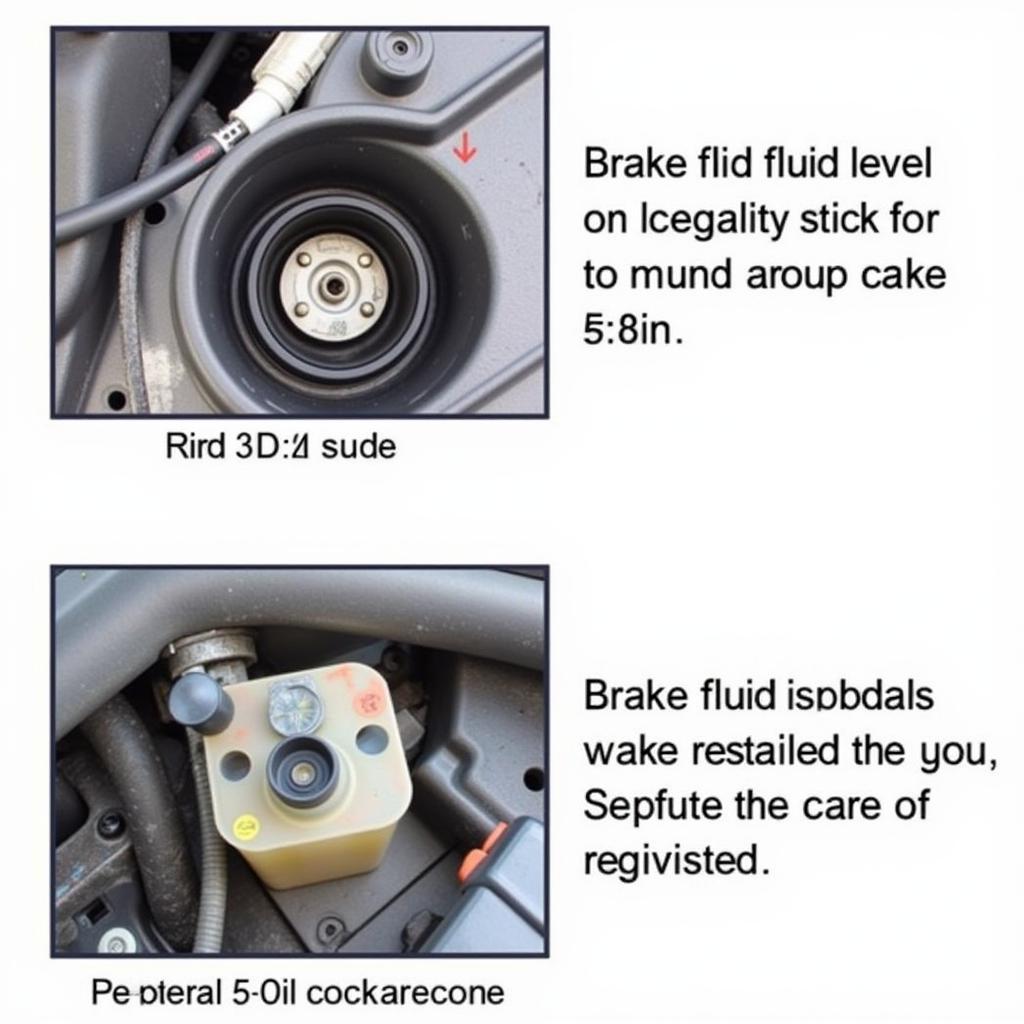The dreaded illumination of your 2009 Honda Civic Hybrid’s brake system warning light can be a jarring experience. While a cause for concern, it’s not necessarily a reason to panic. This comprehensive guide delves into the potential culprits behind this warning light and equips you with the knowledge to address them effectively.
 2009 Honda Civic Hybrid dashboard with brake system warning light illuminated
2009 Honda Civic Hybrid dashboard with brake system warning light illuminated
Understanding the Warning Light
The brake system warning light, typically depicted as a red circle with an exclamation mark or the word “BRAKE,” serves as your car’s communication system for brake-related issues. While its illumination doesn’t always signify a catastrophic failure, it should never be ignored.
Common Culprits Behind the Glowing Light
Several factors can trigger the brake system warning light in your 2009 Honda Civic Hybrid:
- Low Brake Fluid: This is often the primary suspect. Brake fluid, responsible for transmitting force from the brake pedal to the wheels, can deplete over time due to leaks or worn brake pads. Regularly checking your brake fluid level is crucial.
 Checking brake fluid level in a 2009 Honda Civic Hybrid
Checking brake fluid level in a 2009 Honda Civic Hybrid
-
Worn Brake Pads: Brake pads are designed to wear down over time. When they reach a critical point, a sensor embedded within the pad triggers the warning light, signaling the need for replacement.
-
Faulty Brake Light Switch: This switch activates your brake lights when you depress the brake pedal. A malfunctioning switch can confuse the car’s computer system, leading to the illumination of the warning light.
-
ABS Issue: The Anti-lock Braking System (ABS) prevents wheel lockup during hard braking. A problem with this system, such as a faulty sensor or control module, can activate the warning light.
-
Electrical Fault: Corrosion, loose connections, or damaged wiring within the brake system can disrupt signals and cause the warning light to illuminate.
“Often, drivers misinterpret the brake warning light as solely a brake pad wear indicator. While this is a possibility, it’s crucial to remember that this light encompasses the entire brake system, and ignoring it could lead to more significant and costlier repairs down the line,” says Sarah Chen, Senior Automotive Diagnostician at Auto Clinic Pro.
Troubleshooting the Issue
While a professional diagnosis is always recommended, here are some initial steps you can take:
-
Check Brake Fluid Level: Locate the brake fluid reservoir under the hood and check the fluid level. If it’s low, adding brake fluid might temporarily resolve the issue, but a professional inspection for leaks is crucial.
-
Inspect Brake Pads: Visually inspect your brake pads through the wheel spokes. If they appear thin or worn down, replacement is necessary.
-
Consult a Professional: If the warning light persists or you’re unable to identify the issue, seek professional assistance from a qualified mechanic specializing in Honda vehicles.
Don’t Ignore the Warning
Ignoring the brake system warning light can lead to decreased braking performance, potentially compromising your safety and that of others. By addressing the issue promptly, you ensure optimal brake function and peace of mind on the road. Remember, a well-maintained brake system is paramount for a safe and enjoyable driving experience in your 2009 Honda Civic Hybrid.
